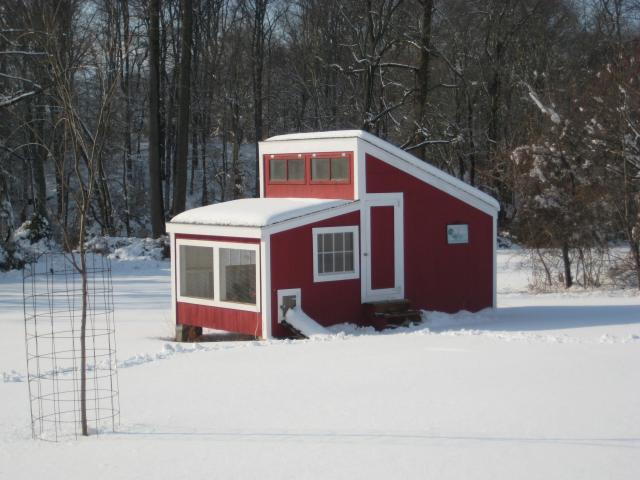With that many hens a lot of the basic guidelines used on here for small backyard flocks don’t apply. How you manage them will make a lot of difference too. You might check out the link in my signature for some of my thoughts on space for them but a lot of that won’t apply to you. Still, it might give you some things to think about.
Your climate will make a difference. Will they really be able to get out every day of the year or will they spend periods confined to the coop? Also, when will you let them out in the morning? The later you leave them locked in after they are awake the more room they need.
They don’t use a lot of roost space once they are on the roosts but they need adequate space to get up there. Also, some of mine can be pretty bad bullies on the roosts as they settle in for the night. Giving them enough space to get away from the bullies can make life a little more peaceful. They’ll want to roost in the ”best” spots but the ones higher in the pecking order will get those. With 46 hens I’d probably be OK with something around 36’ of roost space, in separate roosts spread out a bit. Normally roosts 12” apart and separated from the wall by 12” works out pretty well. As with anything in chickens, more space rather than less is a good idea.
If you are buying new building materials, standard pieces come in 4’ and 8’ dimensions. You can usually reduce cutting and waste if you plan around those dimensions. I’d think about a walk-in coop 8’ wide. The roof needs to be sloped so water drains off and you need some overhang so you can have ventilation at the top of the walls under that overhang, so your rafters will have to be a bit longer. The wider the coop the heavier those rafters need to be for snow and ice load or even just wind load. I would not go any wider than 8’. That leaves you enough room to work in there and leave room for nests, feeders, and waterers if you feed and water inside.
The question is how long. If you use it just for roosts and nests with your management technique that they are never locked in there for extended periods of time, you can probably get away with a 16’ long building. If you occasionally sleep in on a Saturday morning or weather keeps them in there longer, a bigger building might be a good idea. From a building materials perspective a 20’ length isn’t all that bad.
As far as height you certainly need to be able to walk around in there standing straight up. Chickens don’t need a lot of height but you do. If you use bedding on the floor, which most of us do, you need a bit of extra height to keep from banging you head. Also the taller the building the better it ventilates because of hot air rising. The flatter your roof the more likely it is to leak. You want water to run off, not stand on your roof. How much slope you get so water will run off and not pond will depend some on your roofing material too but I’d suggest a minimum of 2 feet slope in an 8 foot run. Some building codes require more. To be able to stand up in there without bending considering bedding, I’d probably go with one wall 8’ tall and the other 2 feet taller.


